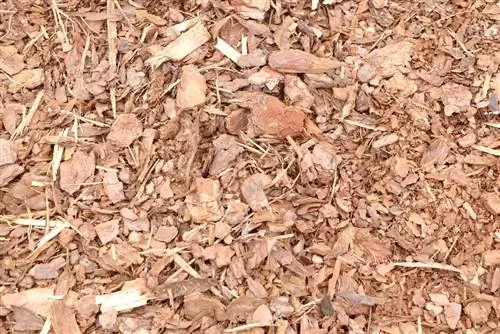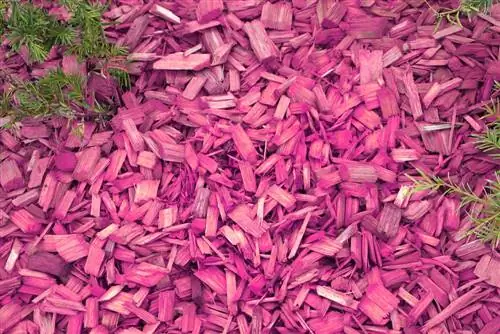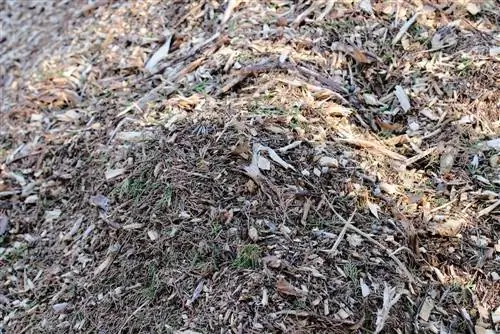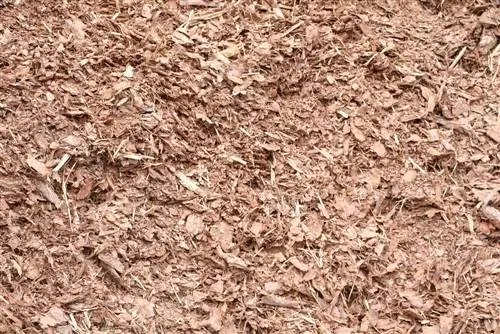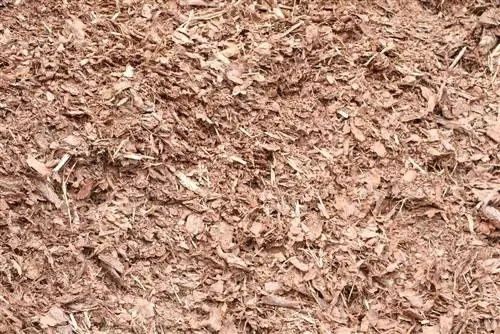- Author admin [email protected].
- Public 2023-12-17 03:39.
- Last modified 2025-01-24 12:45.
Many hours of work often have to be invested to keep the garden looking clean and well-maintained. One way to save time is to mulch. For this purpose, mulch made from pine bark is mainly used in home gardens. A new variety is the so-called pine mulch, which is similar to that made from local conifers, but differs from it in some properties.
Mulching
Mulching is one of the measures in the garden that improves the soil. The ground is covered with mulch, which consists of tree bark. Because mulch is an organic material, it begins to rot on the soil surface. A new layer of soil is created that supplies the old soil with new nutrients. A layer of mulch also protects the soil organisms that are responsible for the decomposition of organic material from the weather. The plants in the bed need less water because the mulch retains moisture in the soil. It also compensates for excessively high temperatures. Mulching has another big advantage for the hobby gardener: it prevents weeds from growing in the bed.
Origin
Native bark mulch is usually the bark of pine and spruce trees. The bark is produced when the trees are harvested and processed. Pine mulch is the bark of pine trees, also called Mediterranean pine or umbrella pine, which comes from forests in southern or western Europe. Both mulches are shredded, unfermented tree bark. Since there is no legal regulation for the components of bark mulch, you should ensure that the mulch is of high quality, because bark mulch does not necessarily only have to consist of tree bark.
Tip:
You can recognize mulch that actually consists of tree bark by the RAL quality seal from the Quality Association for Substrates for Plants (GGS).
Pine or pine mulch
Whether you use native pine or mid-sized pine mulch is of course up to you, but there are a few criteria to help you decide.
Price and carbon footprint
If it's about the well-being of the plants in the garden, the price shouldn't really play a role. Nevertheless, it must be noted right from the start that mulch made from pine bark is two to three times more expensive than local bark mulch, which is mainly due to the transport costs. The long transport route is also responsible for the fact that the CO2 balance of pine mulch is significantly worse than that of pine mulch.
Color and smell
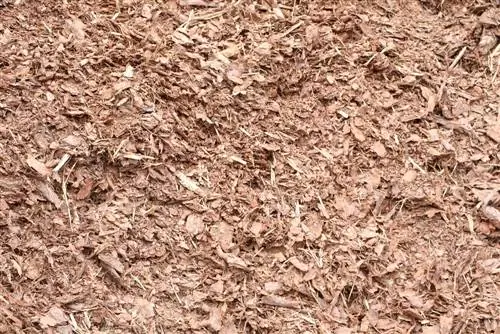
While pine mulch has a natural brown tone, pine mulch is orange in color. This is why the red-orange color in a natural garden can be perceived as disturbing. On the other hand, the orange color of the pine mulch really sets off many plants. And in winter you have a splash of color in the garden with the orange-red mulch. Pine mulch smells like felled trees when you open the packaging. Once it has been applied, this scent usually evaporates. The smell of the pine mulch is described as “scented of conifers” to “somewhat Mediterranean”, which remains even after it has been spread. The scent itself is perceived by many as pleasant, but some also describe it as pungent.
Floor
While price, color and smell affect people, there are of course also properties that affect the soil and therefore benefit plants. These include:
Rot
Pine mulch rots much more slowly than domestic pine mulch. Pine bark mulch lasts two to three years, while bark mulch made from local softwoods should be replenished annually. The slower rotting of the pine mulch has a long-term effect on the price ratio of the two types of mulch.
Nitrogen deprivation
Because mulch binds nitrogen in the soil, less nitrogen is available to the plants. Therefore, with both types of mulch, it is recommended to enrich the soil with nitrogen before mulching so that the plants do not suffer from deficiency symptoms. When using pine mulch, it is recommended to incorporate 50 to 100 grams of horn shavings per square meter into the top layer of soil. With pine bark mulch, which removes less nitrogen from the soil, the amount of horn shavings required is significantly lower.
Tip:
Since decomposition takes longer with coarser grain sizes, a coarser grain size should be chosen for nitrogen-poor soils.
Plants
It makes no difference to the plants themselves whether the ground is covered with bark or pine mulch. However, you should only mulch plants or beds that can tolerate this soil improvement.

